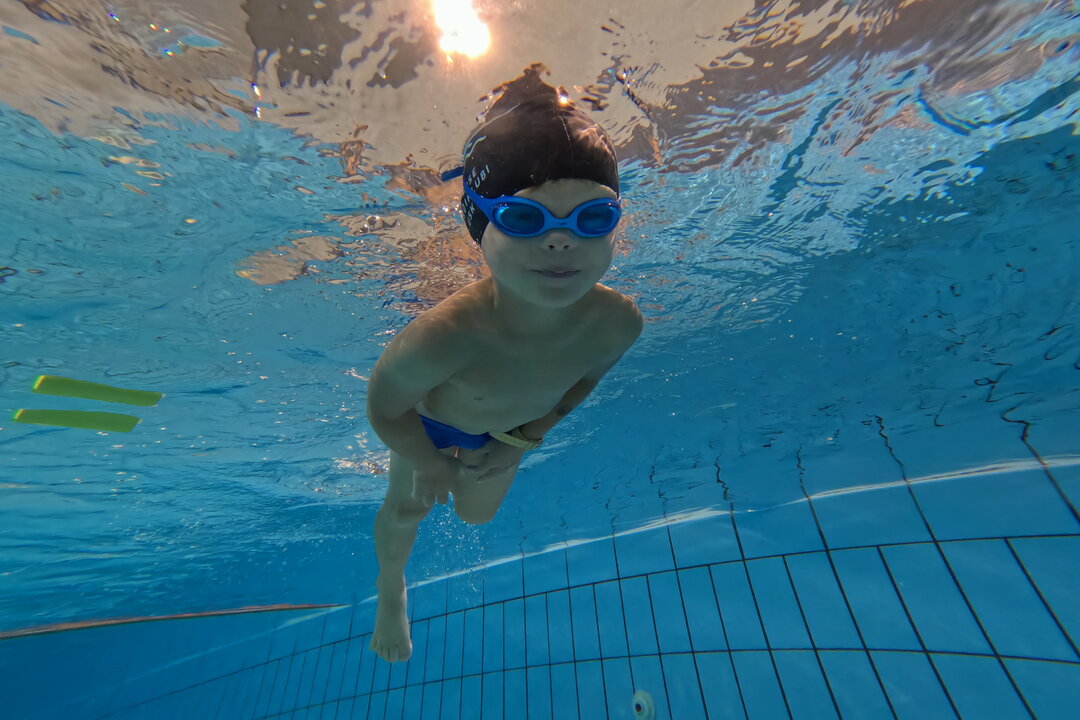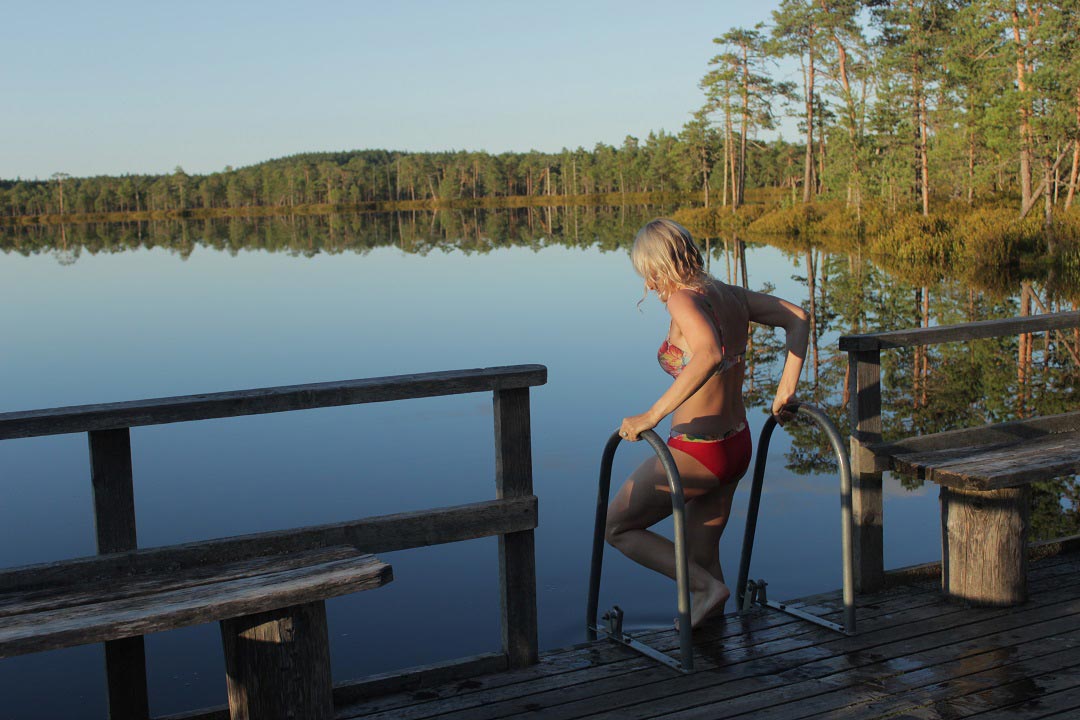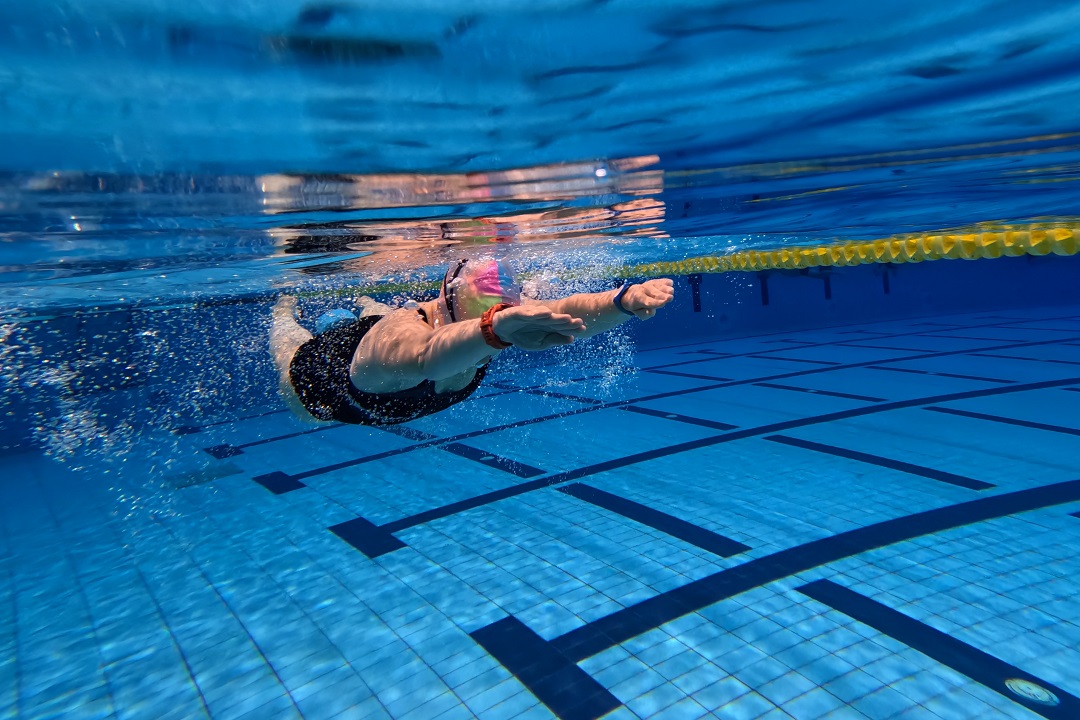Private Swimming Lessons in Tartu for children and adults
Basic Instruction
Basic swimming instruction covers all skills from acclimating to water to full coordination swimming. It is designed for both children and adults, providing a solid foundation for acquiring swimming skills and a thorough understanding of water and self-awareness.
Beginner instruction is a process and period that lies between the first contact with water, adaptation to water, and learning the basic swimming movements.
This includes:
- Moving in water (walking, running, jumping, turning, etc.).
- Breath control and diving (the ability to control breathing and go underwater and stay there).
- Staying afloat (without aids).
- Gliding (sliding in a stable position after a push-off).
- Leg work (coordination and technique of the legs).
- Breathing while swimming (backstroke, freestyle, breaststroke, and butterfly).
- Arm work (coordination and technique of the arms).
The duration of the course largely depends on the swimmer's age, focus, previous experiences, physical capabilities, and fears. Typically, a beginner instruction course lasts 10–30 lessons. However, completing the beginner instruction course does not automatically mean full mastery of swimming skills and movements. Beginner instruction provides basic knowledge and skills to enjoy water, feel comfortable in it, and gain fundamental knowledge and an understanding of swimming movements.
I offer individual beginner instruction tailored to your needs. If you want a personal approach and quality guidance, feel free to get in touch.

Overcoming Fear of Water
Fear of water may arise from a shocking incident or inappropriate teaching methods that have led to traumatic experiences and strong negative emotions towards water. To overcome fear, I divide the curriculum into smaller parts and offer an approach that considers your fears and needs to help mitigate or overcome the fear.
Fear of water can arise from a situation where you felt you couldn't get out from under the water, even if the situation lasted only a moment. Such fear can make trusting water difficult. Fear can also develop during learning process if the instructor has not created a secure environment or the method does not suit the learner.
Overcoming anxiety requires great will and effort, as fear can only be overcome by facing water, getting into it, and (re)learning. The plan to overcome fear of water is similar to the beginner instruction plan but broken down into smaller steps. It includes a lot of theory and illustrative tools to better understand water. Having a better understanding and knowing the rules of how water interacts with our body makes it easier to overcome fear. However, this does not mean the process is simple. Depending on the level of anxiety, determination, and the instructor, overcoming the fear of water can take 4–5 times longer than the beginner instruction program.
Children tend to overcome anxiety faster. For adult learners, anxiety may never completely disappear, but this is entirely normal and understandable. Still, it is possible to reduce anxiety and improve skills, leading to a more enjoyable time in the water and greater satisfaction with oneself, the water, and one's abilities.
You are very welcome if you have decided to make peace with water!

Technique Improvement
Once basic knowledge and skills are acquired, improving swimming technique and increasing proficiency requires practice! Technique training enhances efficiency, effectiveness of strokes, speed, and improves physical fitness.
Technique improvement is designed for those who have completed beginner instruction but have not yet achieved proficiency or movement automation to fully enjoy swimming. It is also for you if you have learned to swim in the past but have since forgotten the skill and now need a refresher. Additionally, this is a great opportunity for self-taught swimmers who have never received methodological guidance and wish to improve their technique. Or, if your job requires passing a physical fitness test, we can prepare for it together.
During the sessions, we focus on skill enhancement by improving coordination, movement technique, efficiency, and speed. Of the four swimming styles (freestyle, backstroke, breaststroke, butterfly), I recommend focusing on the first three.
Do you want to become a better swimmer, prepare for a triathlon, or get ready for a physical fitness test? Let me know your goals, and we’ll make them measurable and achieve them together!



